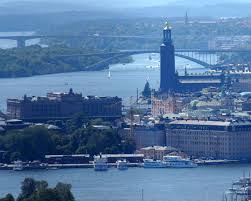Screen Backgrounds Biography
A pedestrian is a person traveling on foot, whether walking or running. In some communities, those traveling using tiny wheels such as roller skates, skateboards, and scooters are also included as pedestrians. In modern times, the term mostly refers to someone walking on a road or footpath, but this was not the case historically.Walking has always been the primary means of human locomotion. The first humans walked out of Africa about 60,000 years ago. They walked along the coast of India to reach Australia. They walked across Asia to reach the Americas, and from Central Asia into Europe.
During the 18th and 19th centuries, pedestrianism (walking) was a popular spectator sport just as equestrianism still is in places such as Great Britain and the United States. One of the most famous pedestrians of that period was Captain Robert Barclay Allardice, known as "The Celebrated Pedestrian", of Stonehaven in Scotland. His most impressive feat was to walk 1 mile (1.6 km) every hour for 1000 hours, which he achieved between 1 June and 12 July 1809. This feat captured many people's imagination, and around 10,000 people came to watch over the course of the event. During the rest of the 19th century, many people tried to repeat this feat, including Ada Anderson who developed it further and walked a half-mile (800 m) each quarter-hour over the 1,000 hours.Since the 19th century, interest in walking as a sport has dropped. It is still an Olympic sport, but fails to catch public attention as it did. However major walking feats are still performed, such as the Land's End to John o' Groats walk in the United Kingdom, and the traversal of North America from coast to coast. The first person to walk around the world was Dave Kunst who started his walk travelling east from Waseca, Minnesota on 20 June 1970 and completed his journey on 5 October 1974 when he re-entered the town from the west. These feats are often tied to charitable fundraising and are undertaken by celebrities such as Sir Jimmy Savile and Ian Botham as well as by others.
Regular walking is important both for human health and for the natural environment. Frequent exercise such as walking tends to reduce the chance of obesity and related medical problems. In contrast, using a car for short trips tends to contribute both to obesity and via vehicle emissions to climate change: internal combustion engines are more inefficient and highly polluting during their first minutes of operation (engine cold start). General availability of public transportation encourages walking, as it will not, in most cases, take one directly to one's destination.








A pedestrian is a person traveling on foot, whether walking or running. In some communities, those traveling using tiny wheels such as roller skates, skateboards, and scooters are also included as pedestrians. In modern times, the term mostly refers to someone walking on a road or footpath, but this was not the case historically.Walking has always been the primary means of human locomotion. The first humans walked out of Africa about 60,000 years ago. They walked along the coast of India to reach Australia. They walked across Asia to reach the Americas, and from Central Asia into Europe.
During the 18th and 19th centuries, pedestrianism (walking) was a popular spectator sport just as equestrianism still is in places such as Great Britain and the United States. One of the most famous pedestrians of that period was Captain Robert Barclay Allardice, known as "The Celebrated Pedestrian", of Stonehaven in Scotland. His most impressive feat was to walk 1 mile (1.6 km) every hour for 1000 hours, which he achieved between 1 June and 12 July 1809. This feat captured many people's imagination, and around 10,000 people came to watch over the course of the event. During the rest of the 19th century, many people tried to repeat this feat, including Ada Anderson who developed it further and walked a half-mile (800 m) each quarter-hour over the 1,000 hours.Since the 19th century, interest in walking as a sport has dropped. It is still an Olympic sport, but fails to catch public attention as it did. However major walking feats are still performed, such as the Land's End to John o' Groats walk in the United Kingdom, and the traversal of North America from coast to coast. The first person to walk around the world was Dave Kunst who started his walk travelling east from Waseca, Minnesota on 20 June 1970 and completed his journey on 5 October 1974 when he re-entered the town from the west. These feats are often tied to charitable fundraising and are undertaken by celebrities such as Sir Jimmy Savile and Ian Botham as well as by others.
Regular walking is important both for human health and for the natural environment. Frequent exercise such as walking tends to reduce the chance of obesity and related medical problems. In contrast, using a car for short trips tends to contribute both to obesity and via vehicle emissions to climate change: internal combustion engines are more inefficient and highly polluting during their first minutes of operation (engine cold start). General availability of public transportation encourages walking, as it will not, in most cases, take one directly to one's destination.
Screen Backgrounds
Screen Backgrounds
Screen Backgrounds
Screen Backgrounds
Screen Backgrounds
Screen Backgrounds
Screen Backgrounds
Screen Backgrounds
Screen Backgrounds
Green Screen Backgrounds Tutorials
How To Get Windows Phone 7 Lock Screen Backgrounds From The Web
No comments:
Post a Comment